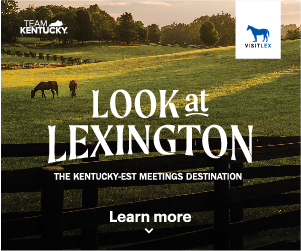Long-term, low interest rate helps hold line on toll rates
FRANKFORT, Ky. (Nov. 20, 2013) – Kentucky has been approved for a low-cost federal loan that will save an estimated $100 million on financing of the Downtown Crossing portion of the Louisville-Southern Indiana Ohio River Bridges Project, according to Gov. Steve Beshear.
“Approval of this loan underscores the importance of the Ohio River Bridges Project to our national transportation system,” Beshear said.

The loan, for up to $452 million, is through the Transportation Infrastructure Finance and Innovation Act program (TIFIA) of the Federal Highway Administration (FHWA). The TIFIA program was created to help finance major transportation projects of national and regional significance. One of the great benefits is that recipients are able to lock in long-term interest rates that typically are lower than for other, more traditional forms of financing.
The commonwealth and FHWA expect financial close of the loan in early to mid December, but notification that U.S. Secretary of Transportation Anthony Foxx had approved the loan came this week from FHWA.
“We appreciate Secretary Foxx’s approval of the loan, and we value our long-standing partnership with the Federal Highway Administration,” Beshear said.
The Downtown Crossing, at a total cost of about $1.3 billion, is half of the larger, $2.6 billion Ohio River Bridges Project, which Kentucky and Indiana are jointly building to dramatically improve cross-river mobility in the Louisville Metropolitan area.
The Downtown Crossing is being built as a design-build project by Walsh Construction Co., of Chicago. The project will include a new bridge to carry northbound Interstate 65 traffic between Louisville and Jeffersonville, Ind. The John F. Kennedy Memorial Bridge, which today carries all I-65 traffic, will be renovated and converted to carry southbound traffic only. In addition, the Kennedy Interchange, where I-65, I-64 and I-71 come together in downtown Louisville, will be rebuilt.
Kentucky is financing the Downtown Crossing with a combination of federal highway funds and bond sales, including toll revenue bonds and bond anticipation notes that will be issued by the Kentucky Public Transportation Infrastructure Authority. Under the financing plan, TIFIA loan proceeds will be used in 2017 to retire the bond anticipation notes. “The TIFIA loan is a key component of the total financing package,” said Kentucky Transportation Secretary Mike Hancock.
Beshear and Federal Highway Administrator Victor Mendez broke ground for the Downtown Crossing on June 18, and construction is well underway. It is scheduled for completion in December 2016.
The other half of the project is the East End Crossing, a new bridge and approaches, upriver from Louisville, to connect the Gene Snyder Freeway in Kentucky with the Lee Hamilton Highway in Southern Indiana. It will complete a loop around the greater Louisville area.
The East End Crossing is being built and financed as a Public-Private Partnership involving Indiana Department of Transportation, Indiana Finance Authority and the contracting team, WVB East End Partners.
Kentucky and Indiana will equally share toll revenues, and on Sept. 11, 2013, a bi-state Tolling Body approved initial base toll rates ranging from $1 to $10 per crossing for commuters and trucks paying tolls automatically with transponders. Tolls are higher for drivers who do not use the technology tools that keep administrative costs low.
“We were encouraged about Kentucky’s prospects for being approved for a TIFIA loan, and it was factored into the initial base toll rates,” said Hancock, a member of the Tolling Body. “We are grateful for this assistance from the Federal Highway Administration, which has been our indispensable partner throughout this project.”




















Add Comment